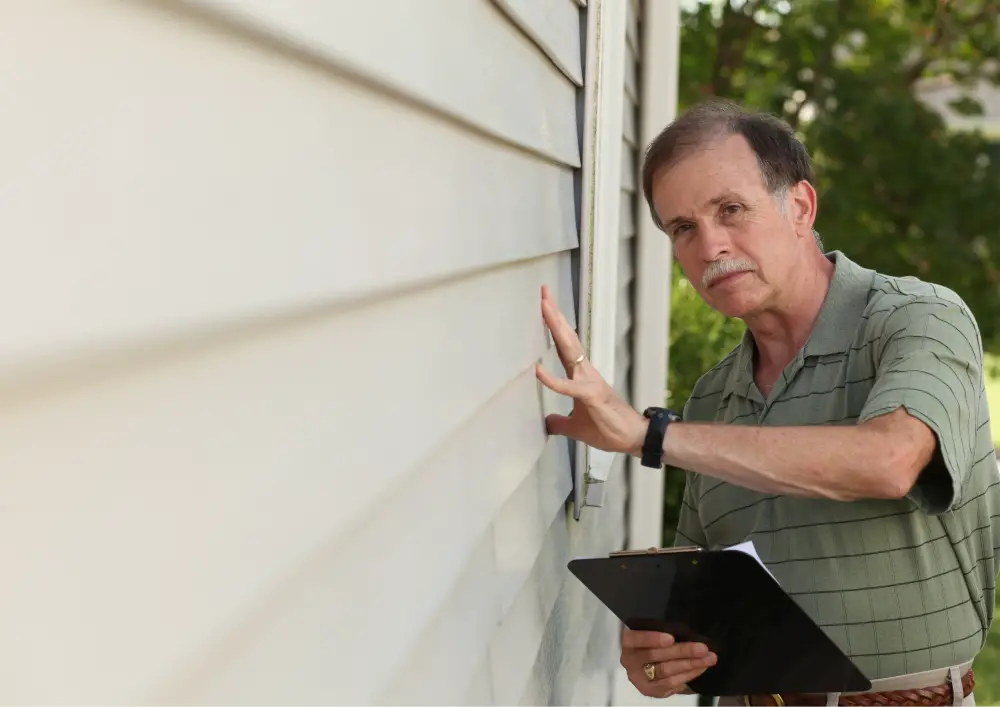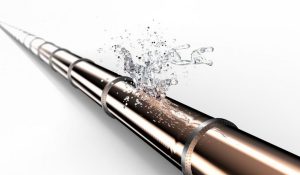Regular checks of your home can mean the difference between a costly repair bill and a comfortable house. Finding and fixing a problem early on lets you avoid water damage, injuries, electrical fire, and much more.
Use this guide as your roadmap for spotting early issues in your home before they turn into big problems. It’s like giving your home a health check-up.
Contents
Tools You Will Need for DIY Home Inspection
It pays to have the right tools to do DIY home inspections. Here are the ones to consider keeping in your garage or utility closet:
Flashlight
A flashlight lets you light dark places where cracks, molds, and other problems that are hiding during your DIY home inspection. Always consider easily handled flashlights with higher brightness so you can check each corner of your house.
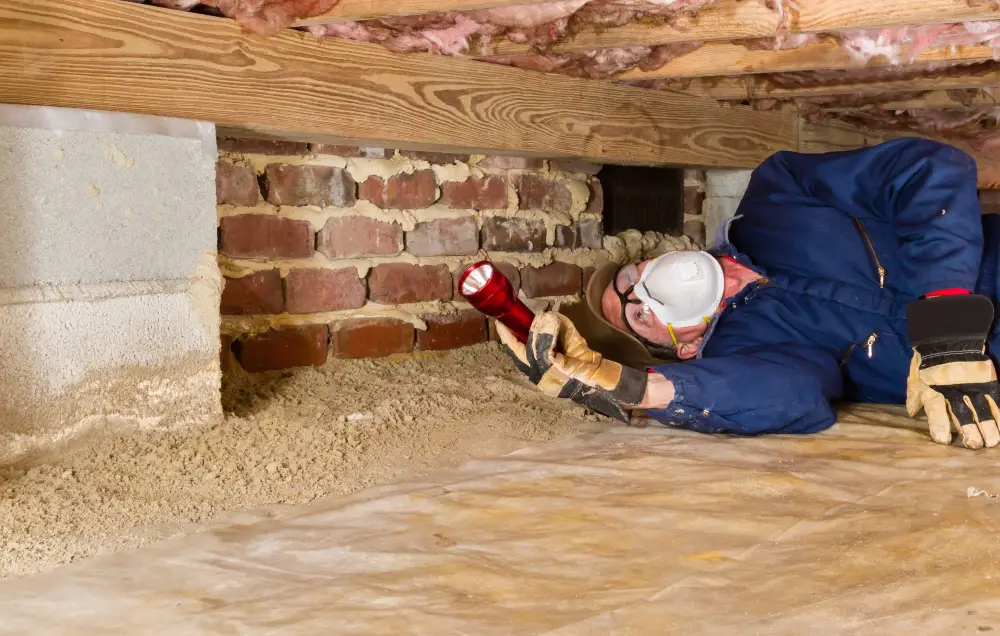
Screwdriver
A screwdriver serves more than its primary function of tightening or loosening screws during your DIY home inspection. It allows you to open electrical panels and other compartments for a more comprehensive home inspection.
Measuring Tape
A measuring tape objectively gauges the size and severity of visible issues like cracks or gaps in your DIY home inspection. Accurate measurements let you know if those cracks are growing over time.
Notepad
A notepad lets you write down all the problems you will find during your DIY home inspection. Don’t overlook your phone or computer as tools for jotting down what needs fixing. They’re not just for selfies and emails.
Ladder
You will need a ladder to reach higher places for your DIY home inspection, such as the gutters or roof. It is important you find a sturdy and reliable ladder that will stay in place while in use. A good example is the Telescoping Extension Ladder.
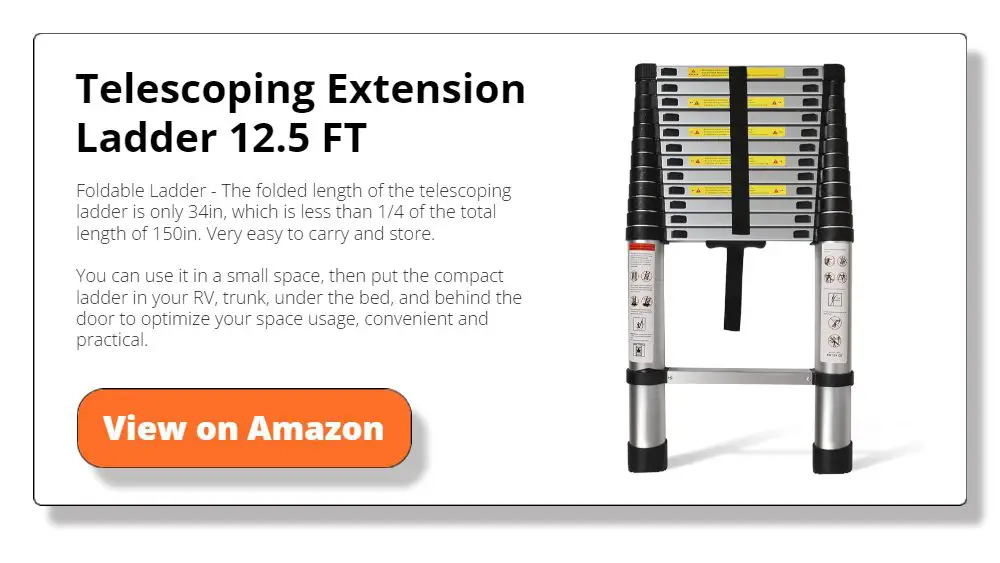
Safety Gear
In this guide, you will check your house’s electrical wiring. We highly recommend having the proper gear to inspect the wiring system of your house safely.
With the right tools, you’re ready to dive into the home inspection. Each tool has a role in helping you uncover what needs attention in your home.
Inspecting the Exterior
The exterior is your first line of defense against the elements, so it’s critical to identify any weaknesses before they become major issues in your DIY home inspection.
Roof and Shingles
The roof of your house stops the rain, sun, and other debris from entering your home. Common issues in this part of the house include missing or damaged shingles. Regular DIY home inspection on your roof lets you find and replace broken shingles or roofing to prevent leaks.
Gutters and Downspouts
Gutters and downspouts direct water away from your home. Blocked or damaged gutters can lead to water pooling and cause leaks or foundation problems. Clear debris and look for signs of rust or holes during your DIY home inspection.
Exterior Walls and Paint
The exterior walls protect your home from weather and wear. Issues like cracked or peeling paint, holes, or water stains are red flags. They may suggest underlying issues like water damage or even pests.
Windows and Doors
Windows and doors are the gateways to your home. Check for broken seals, cracked glass, or rotting frames. while doing your DIY home inspection. Cracks can leak cold or hot air from your house, leading to a higher electrical bill.
Yard and Drainage
The state of your yard can impact your home’s foundation. Look for poor drainage, as standing water near the home can lead to foundation issues. Make sure your yard slopes away from the house to guide water away.
After thoroughly conducting a DIY home inspection, you’ll know what needs immediate attention and what can wait.
Foundation and Structure
Moving on to the foundation and structure of your home. The foundation is what your home stands on. Major issues with this part of the house can lead to major structural damages.
Concrete Foundation
The concrete foundation is a critical element of your home’s structural integrity. Typical issues here include hairline and larger cracks that may indicate settling or possible water damage.
Moisture is another concern; signs of water pooling or dampness can lead to more severe problems like mold or even structural weakening. Additionally, efflorescence, a white powdery substance on the surface, can indicate moisture issues.
Beware of uneven flooring inside the house, as this can also indicate problems with the concrete foundation. You can immediately see these problems with regular DIY home inspections. Addressing these issues early can prevent more complex problems, including the potential failure of the foundation itself.
Crawlspace or Basement
Crawlspaces and basements are often overlooked areas of the home but are vital to its overall health. Mold and mildew are common problems due to poor ventilation or water leaks. It is important to include these places in your DIY home inspection.
Pests like rodents or insects can also find their way into these spaces, leading to possible infestations. Moreover, insulation problems are common, affecting the home’s energy efficiency. Cracks or damp spots on the walls can indicate water issues that need immediate attention.
Rotten or soft wooden components can suggest moisture or pest problems that can spread to other parts of the house. Stagnant water or a musty smell is a red flag for drainage or water issues affecting the foundation.
Structural Beams and Posts
Structural beams and posts play a crucial role in supporting your home. Sagging beams or posts can indicate a structural issue that needs immediate attention. Regular DIY home inspection lets you see any early issues with the foundation of your house.
Check for rotten, cracked, or warped wood, which can be signs of moisture damage or aging. Also, look out for bowing or bending in these structural elements. Another concern could be termite damage, often identified by small, round holes in the wood and sawdust-like droppings.
Rust on metal beams is another warning sign, indicating potential weakness in the structure’s support system.
After inspecting the foundation and structure, you’ll gain peace of mind knowing the backbone of your house is always in good shape.
Indoor Plumbing
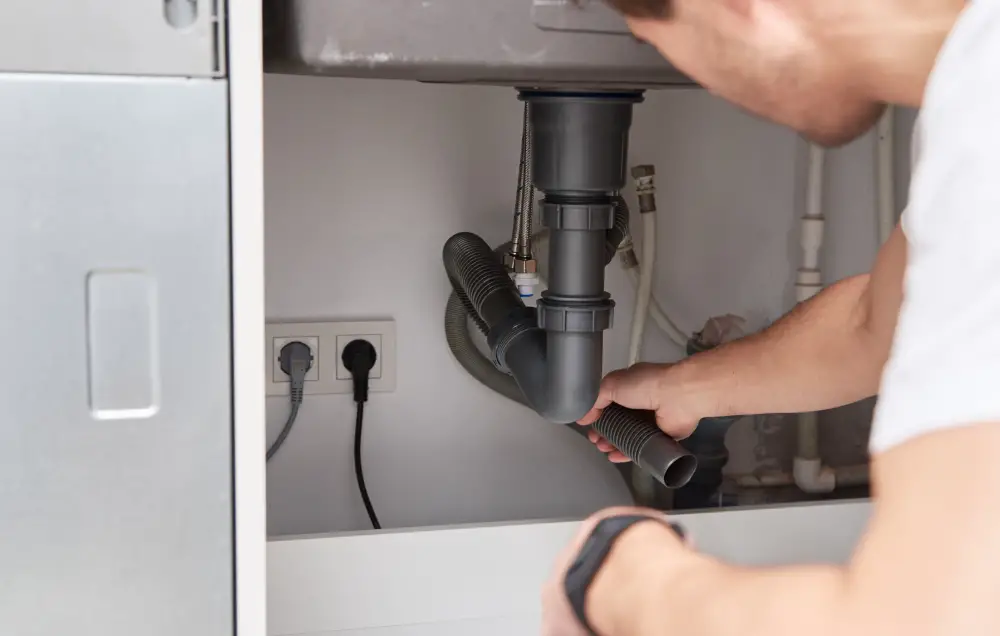
A thorough plumbing system check can save you from high water bills or expensive water damage caused by leaks. Here are parts of your plumbing to consider for your DIY home inspection.
Faucets and Sinks
Your kitchen and bathroom rely heavily on faucets and sinks. You’ll feel it in your daily routine if they’re not up to snuff. Common problems include leaks from the faucet itself or the pipes underneath the sink. Dripping faucets not only wastes water but can also increase your utility bills.
Slow drainage is another issue that could indicate a blockage further down the pipe. Persistent bad odors from the sink might signal issues with the P-trap, leading to bigger plumbing troubles.
Water Heater
The water heater is crucial for a comfortable home. Signs of problems include inconsistent water temperature or a complete lack of hot water, which could indicate a faulty heating element.
Leaks around the water heater or a persistent rotten egg smell are signs of bigger issues. Rust or discolored water from your faucets can also point to an aging water heater that might need replacement.
Pipes and Drains
Pipes and drains are the veins of your home’s plumbing system. Leaky pipes can cause water damage, often indicated by water stains on walls or ceilings. Noisy pipes might signal water pressure issues.
Slow or clogged drains could mean blockages that may require professional cleaning. Persistent bad smells from drains indicate a sewer issue, which can be a significant problem.
After inspecting the indoor plumbing, you’ll have a clearer idea of what needs immediate fixing and what can be monitored for future maintenance. This is a key step in ensuring the smooth operation of your home and avoiding unexpected plumbing emergencies.
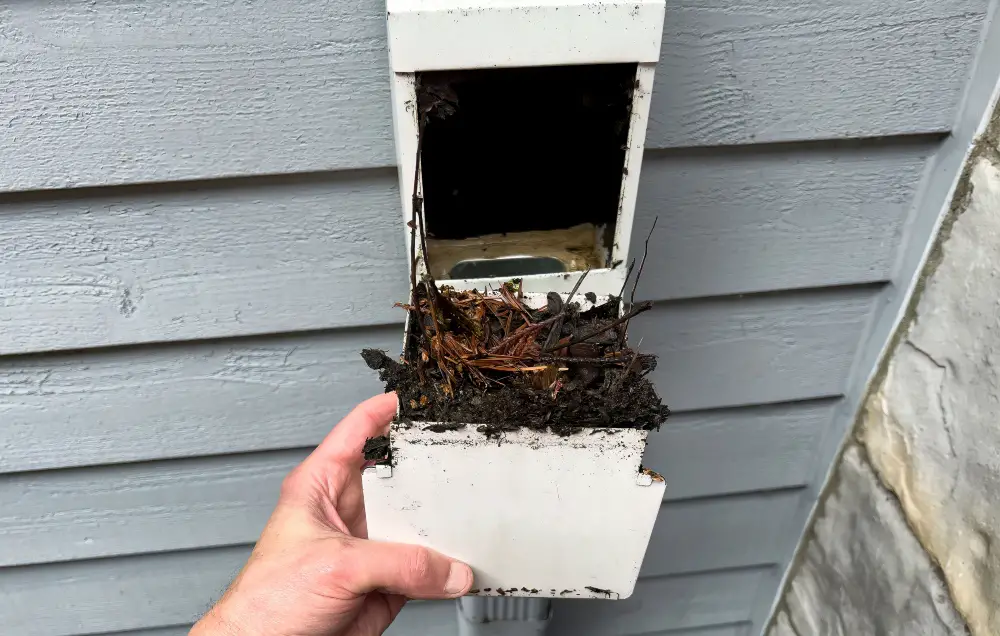
Electrical Systems
Reviewing your home’s electrical elements can help avoid hazards like fires and electrical shocks.
Circuit Breakers and Fuse Box
The circuit breaker or fuse box is the control center of your home’s electrical system. One common issue is tripped breakers, which usually indicate an overloaded circuit. Repeated trips could mean faulty wiring or too many devices on one circuit.
Older homes may still have fuse boxes, where blown fuses are a common problem. Replacing fuses too often suggests a more significant issue with the electrical load. Also, if the box looks corroded or shows signs of wear, it might be time for an upgrade.
Outlets and Switches
Outlets and switches are the interaction points between you and your electrical system. A clear sign of a problem is an outlet or switch that’s hot to the touch. This could indicate faulty wiring and pose a fire hazard.
Flickering lights or devices not turning on can also signal issues. Another sign to watch out for is any buzzing or sizzling sounds when using switches, which should be addressed immediately.
Light Fixtures and Bulbs
Light fixtures and bulbs are another part of the electrical system to inspect. Dimming or flickering lights can mean various things, from a simple bulb replacement to more serious wiring issues.
Overheating fixtures are a fire hazard and should be checked immediately. If you notice a burnt smell around light fixtures, turn them off and inspect for any issues like frayed wires or other damages.
Wiring and Cables
Wires and cables run throughout your home, hidden within walls and ceilings. Exposed or frayed wiring is a serious concern that should be addressed immediately, as it can lead to electrical shocks or fires.
Discoloration around outlets or switches could indicate heat damage from faulty wiring. Older homes with knob and tube wiring should be inspected for age-related wear and may require an upgrade.
Smoke and Carbon Monoxide Detectors
Last but certainly not least are smoke and carbon monoxide detectors. Test these devices regularly to make sure they’re operational. Replace batteries at least once a year or as needed.
If your detectors are older than ten years, consider replacing them entirely. Failure to operate correctly could have life-threatening consequences, making this a vital part of your electrical home inspection.
Completing your electrical system home inspection will provide valuable insights into your home’s safety and functionality. Remember, electrical work can be dangerous, so consult a professional for repairs or upgrades when in doubt.
Heating and Cooling
Neglecting the issues of your house’s heating and cooling system can lead to high utility bills and uncomfortable living conditions. Here are the parts of the system to check
Furnace and Boiler
The furnace and boiler are the heart of your home’s heating system. If you notice inconsistent heating or hear strange noises, these could be signs of a problem. Age is another factor; older units are less efficient and might need replacement. Call a professional contractor right away if you smell gas from your furnace.
Regular maintenance is crucial. Keep an eye out for soot around the furnace, which can indicate incomplete combustion and is a safety risk.
Air Conditioning Unit
Signs of air conditioning trouble include the unit not cooling properly or making unusual sounds. Water leaks around the unit are another common issue that could indicate a blocked or broken drain pipe.
Low refrigerant levels can reduce efficiency and cooling power. In more extreme cases, the unit might freeze up entirely, requiring professional repair. Make sure to clean or replace filters to keep the system running smoothly.
Vents and Ducts
Vents and ducts distribute air throughout your home. Blocked or dirty vents can reduce airflow, causing your systems to work harder. A leak of heated or cool air will increase your electrical bills.
Check for any gaps or disconnections in the ductwork. Leaky ducts can reduce efficiency and lead to uneven heating or cooling. Make sure to clean vents regularly to improve air quality and system efficiency.
Thermostat
Common issues include incorrect temperature readings or the system not turning on or off as it should. A rapid cycling system could indicate a problem with the thermostat’s calibration.
Battery issues are also common and easy to overlook. Make sure to replace batteries regularly. For smart thermostats, ensure they’re correctly connected to your home’s Wi-Fi for optimal performance.
Filters
People forget about filters, which are key to your home’s comfort and your HVAC system’s efficiency. Don’t let them clog up on you. A clogged or dirty filter will force your system to work harder, increasing energy bills. Poorly maintained filters can also house dangerous microbes that can harm your health.
Make sure to check filters every month and replace them as necessary. You should replace them more often during high-use seasons like winter and summer. Some systems have washable filters, which should be cleaned regularly.
Proper maintenance can extend the lifespan of these systems and keep your home comfortable year-round.
Kitchen and Dining Area
Issues in the kitchen can lead to a dangerous problem that affects everyone. A home inspection here can reveal issues ranging from minor annoyances to significant safety hazards.
Appliances
Appliances are central to a functioning kitchen. Common problems include inconsistent temperatures in ovens and fridges. Do you have an air conditioning unit that’s acting weird? Not cooling as it should or making strange noises? It’s shouting for attention.
Regular maintenance is vital. For instance, fridges need periodic coil cleaning to maintain efficiency. Dishwashers may require new seals or spray arms if they start leaking or fail to clean properly. Always consult the user manual for maintenance tips specific to your appliance models.
Countertops and Cabinets
Issues here include chipped or loose countertops and squeaky or misaligned cabinet doors. Water damage under sinks is also a common issue that can lead to rotting wood.
Tighten loose handles and adjust door hinges as needed. If you see water stains or signs of mold, that could indicate a leak that needs immediate attention.
Flooring
The floor takes a lot of daily abuse. Common problems include loose tiles, scuff marks, and warping, especially near sinks or dishwashers where water is exposed daily. Cracked or chipped tiles can become a trip hazard and should be replaced.
Pay attention to the condition of any grout or sealing. Worn or missing sections can allow moisture to seep under tiles, causing further damage. Regular cleaning and prompt attention to issues will keep your floors looking their best.
Plumbing and Drains
Kitchens are a hotspot for plumbing issues. Slow-draining sinks or garbage disposals that don’t work are typical problems. Leaky faucets can waste water and increase your bills.
Be mindful of weird smells coming from the bottom of your sink. Persistent odors could indicate a blocked drain or issues with your garbage disposal. Make sure to address these promptly to prevent more significant issues.
Electrical Outlets
Electrical outlets in the kitchen are crucial for powering your appliances. Outlets that are loose or don’t hold plugs securely can be annoying and hazardous. Also, outlets near water sources like sinks should be GFCI outlets to prevent electric shock.
Make sure all outlets are secure and functioning correctly. Test GFCI outlets regularly to ensure they’re providing the safety features they’re designed for. Consult an electrician immediately if you notice any sparks or hear buzzing sounds.
Completing your kitchen and dining area home inspection will give you peace of mind. It will also help you prioritize any needed upgrades or repairs. Address any issues promptly to ensure these spaces remain safe and functional for everyone.
Inspecting Bathrooms
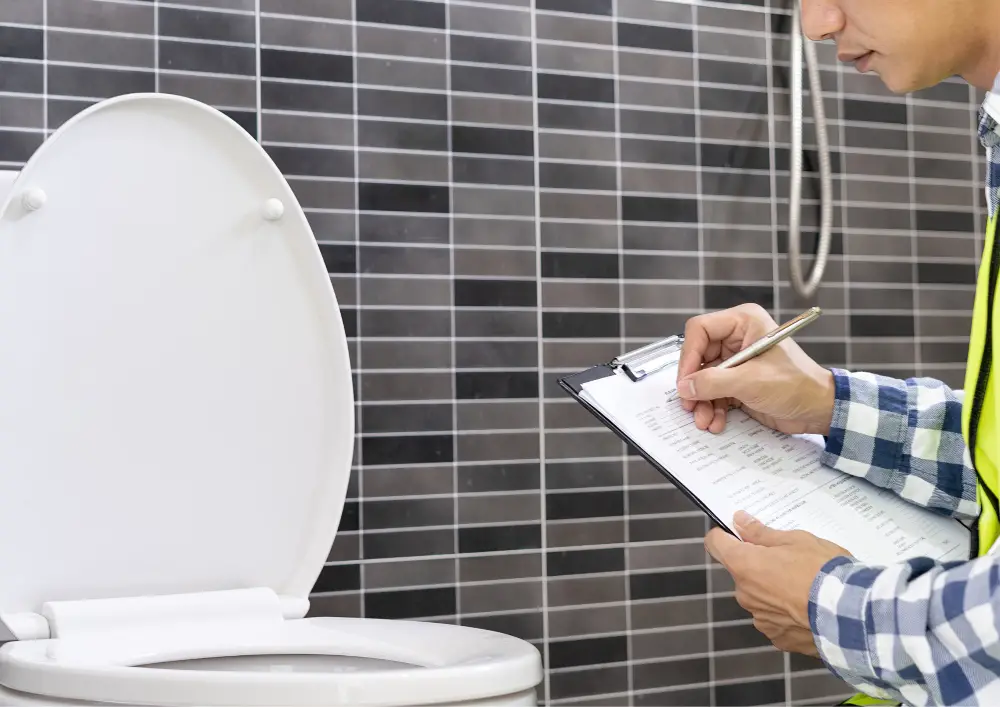
The bathroom is another high-traffic area that needs special attention. Problems here could lead to injuries or water damage.
Toilets
Toilets are essential but can host a variety of problems. Continuous running water in the tank is a common issue that can skyrocket your water bill. Clogs and slow flushing indicate a blockage that may require immediate attention.
A loose toilet base could mean a broken flange, leading to leaks and water damage over time. If you notice water pooling around the base, it’s a sign of a more severe issue that needs fixing.
Bathtubs and Showers
Water pressure issues and slow drainage are common problems in bathtubs and showers. Inconsistent water temperature can indicate issues with the mixing valve. Cracked tiles or deteriorating caulk can leak water into the walls, causing structural damage.
An unusual or musty odor could also signify hidden mold or mildew, which can pose health risks. Check the net or online videos on molds and mildew to identify it. Consider professional help if the mold is dangerous to remove.
Flooring and Tiles
Bathroom floors and tiles take a beating from constant moisture exposure. Loose or cracked tiles can be a sign of underlying moisture damage. Additionally, they can be a trip hazard. If you notice discolored grout, it may indicate water seeping beneath the surface.
Make sure to reseal grout lines and replace any damaged tiles as soon as possible. If not addressed quickly, water damage can lead to mold growth and structural issues. Inspect caulking around bathtubs and sinks, too. Old or missing caulk can allow water to penetrate walls and floors, leading to more extensive damage.
Ventilation
Ventilation is crucial in bathrooms to remove excess moisture and prevent mold growth. If your exhaust fan is noisy, it could be clogged with dust or on its last legs. A fan that doesn’t adequately clear moisture is not doing its job and could be due for a replacement.
Make sure to clean the exhaust fan regularly to ensure it functions correctly. Proper ventilation is more than just a fan; check for blocked vents or airflow issues. If the bathroom remains humid or foggy for extended periods after a shower, it’s a clear sign your ventilation is insufficient and needs addressing.
Everyone wants a clean and functional bathroom whenever nature calls. Regular home inspection ensures this unique room will make everyone comfortable when they need to go.
Conclusion
Regular check-ups are your first defense against minor issues that could become big headaches. Trust me, in the future, you will be grateful. Keep this guide handy, and may your homestay be as solid as your effort in maintaining it.
Team Ideas24 believes early prevention is the best fix for home problems.

